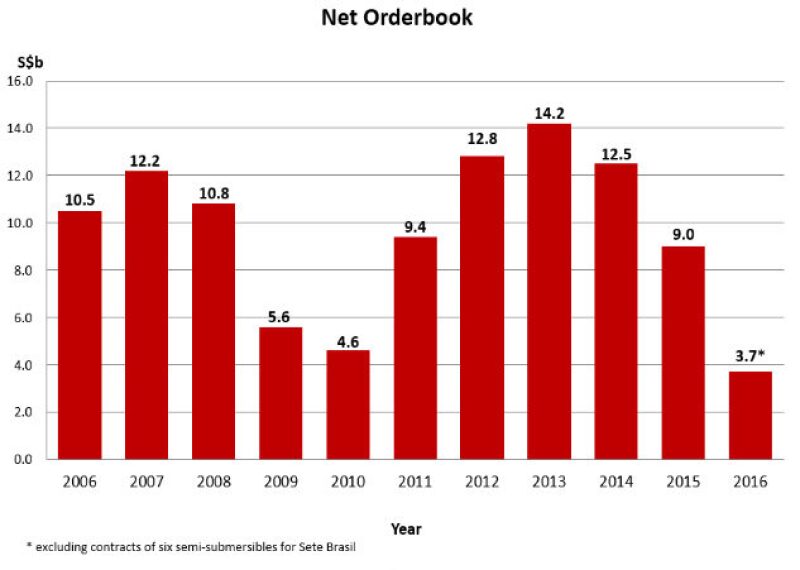Keppel is cutting its yard capacity and has mothballed two overseas yards. In Singapore, it is closing three yards as a result of the industry downturn.
In its 4Q 2016/FY 2016 results the company reported a 35% reduction in its workforce (about 10,600 people) for the year, of which 3,800 were in Singapore and 6,800 overseas. The Offshore & Marine division’s slowdown in business contributed mightily to a drop of 49% in the company’s FY 2016 net profit compared with FY 2015. The 4Q was a rough ride, with net profits decreasing 65% from a year ago.
The company does not envision a quick recovery for the offshore business, noting the continued pressure from weak utilization of the existing operating fleet coupled with a supply “overhang” of newbuilds. It expects to deliver 20 newbuild and conversion projects, including the world’s first LNG-carrier-to-FLNG conversion, Golar LNG’s Golar Hilli. The vessel is set to begin an 8-year contract in September to export LNG from Cameroon.

Keppel is also seeking opportunities “to service niche, adjacent, or even new markets,” such as production solutions, nondrilling solutions, and specialized vessels. For example, the Jan De Nul Group awarded Keppel contracts to build three trailing suction hopper dredgers (TSHD) last July. A TSHD is mainly used for dredging loose and soft soils such as sand, gravel, silt, or clay. The dredged material can be deposited on the seabed through bottom doors or discharged through a floating pipeline to shore and used for land reclamation.

